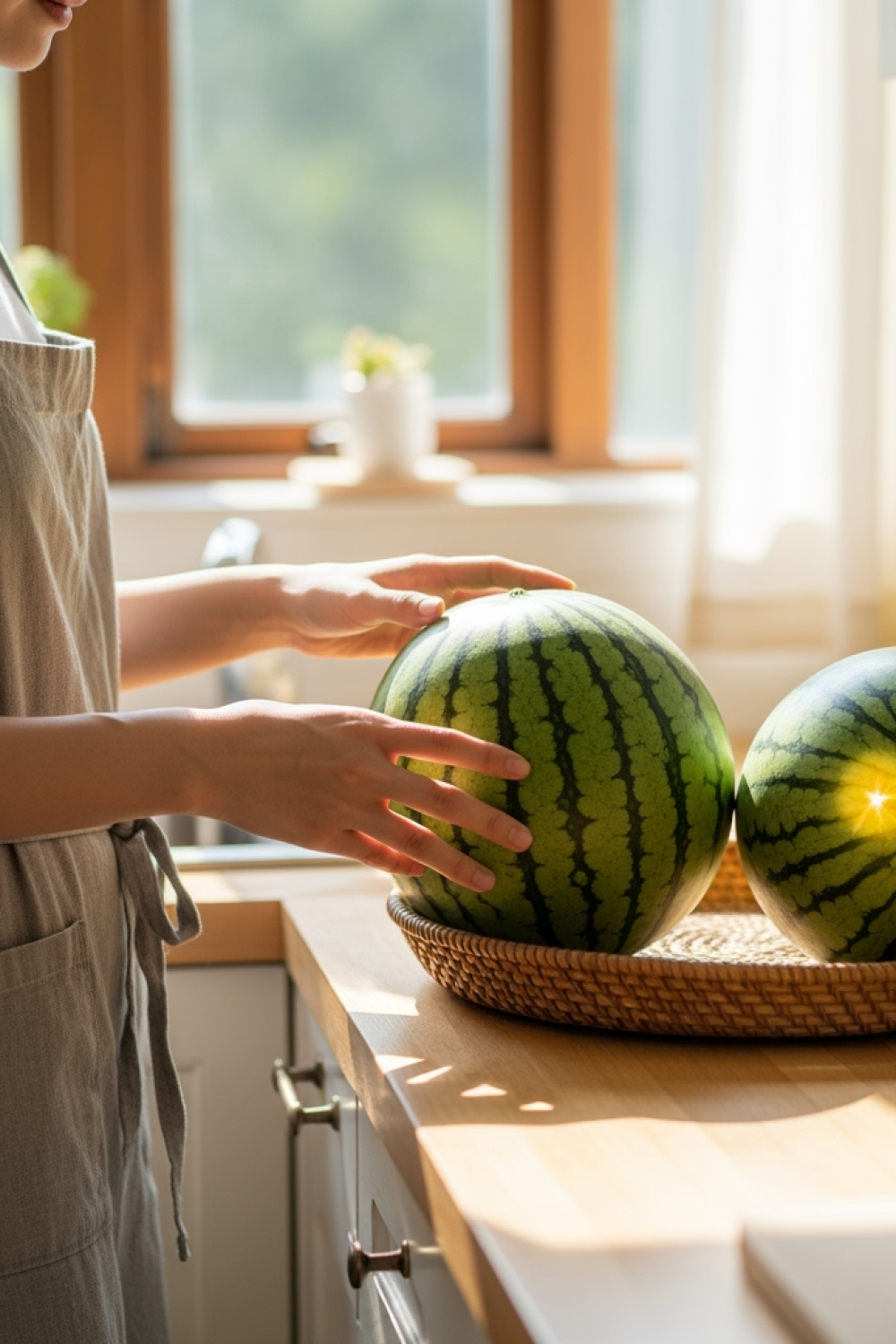Want to save this recipe?
Enter your email below and we’ll send the recipe straight to your inbox!
Have you ever felt that moment of hesitation in front of a watermelon display, wondering which one will be the juiciest and most flavorful? This moment of doubt is universal, but some people seem to have a gift for consistently choosing the best fruit. What if their secret lies in a simple spot on the rind? This little-known but highly effective trick could forever change how you select watermelons.
The Yellow Spot That Changes Everything: The Connoisseur’s Secret
This famous “spot” that insiders talk about is actually the contact area between the watermelon and the ground during its growth, called the “field spot.” Contrary to what one might think, this mark isn’t a flaw—it’s a true indicator of quality!
The brighter yellow this spot is, the more time the watermelon had to ripen naturally on its vine. A deep yellow-orange color is particularly desirable, as it indicates that the fruit reached full maturity before being harvested. Conversely, a whitish or barely visible spot generally signals a watermelon picked too early, which will likely lack both sweetness and flavor.
How to Spot the Perfect Field Spot
To identify this precious ripeness mark, gently turn the watermelon over and look for an area colored differently from the rest of the rind. Size matters little—it’s the intensity of the color that counts. A beautiful creamy yellow to orange spot is what you’re looking for.
Combine With Other Quality Indicators
To maximize your chances, pair this observation with other complementary techniques:
- The sound test: Gently tap the watermelon with your fingers. A hollow sound, similar to a drum, usually indicates good ripeness.
- The weight test: A quality watermelon will feel surprisingly heavy for its size, a sign that it’s full of water.
- General appearance: Favor watermelons with a matte rather than shiny skin, with well-defined stripes.
Common Mistakes to Avoid
Relying Solely on the Exterior Color
The most common mistake is judging a watermelon by the brightness of its green color. The exterior color has virtually no relationship with the internal ripeness of the fruit. A watermelon can be bright green yet severely lacking in flavor.
Neglecting the Stem
Another misconception is ignoring the condition of the stem. If it’s still green and flexible, it’s often a sign that the watermelon was picked too early. A slightly dried stem is preferable.
Over-Relying on Tapping
Although the sound test is useful, relying on it exclusively can be misleading for beginners. The “perfect” sound is difficult to identify without experience.
Benefits Beyond Taste
Substantial Savings
By consistently choosing fully ripe watermelons, you avoid food and financial waste. A perfect watermelon will be enjoyed down to the last slice, unlike a disappointing fruit that often ends up half-eaten at the back of the refrigerator.
Optimized Nutritional Benefits
A perfectly ripe watermelon offers not only a better taste experience but also superior nutritional value. Fully ripened fruits generally contain higher levels of antioxidants, including lycopene, known for its beneficial properties for cardiovascular health.
Positive Environmental Impact
This approach promotes more responsible consumption and reduces waste, contributing to a more sustainable food system.
Expert Opinions
According to Maria Rodriguez, an agronomist specializing in fruit crops: “The yellow spot is indeed the best natural indicator of ripeness for a watermelon. This is where the fruit accumulates its sugars last, and an intense coloration indicates complete development.”
Pastry chef Pierre Lemoine confirms: “In professional restaurants, we train our staff to always check this area. It’s literally the watermelon’s flavor identity card.”
In Summary: Your Express Guide to the Perfect Watermelon
The next time you’re facing a watermelon display, don’t hesitate: turn the fruit over, identify the field spot, and favor specimens with a bright yellow to orange mark. Complete your evaluation with the sound test and weight feeling for an almost infallible selection.
This simple but effective method will guarantee juicy, sweet, and perfectly ripe watermelons throughout the season. So start today and impress your friends and family with your new connoisseur expertise!
Frequently Asked Questions
Does the shape of the watermelon influence its quality?
No, shape generally doesn’t impact flavor. Round, oval, or even slightly asymmetrical watermelons can be equally delicious.
Is it better to buy whole watermelons or slices?
Buying a whole watermelon allows you to evaluate all the quality indicators mentioned but requires more storage space. Slices let you see the internal color but offer fewer guarantees of optimal ripeness.
How long can you store a watermelon after purchase?
A whole watermelon keeps for about 7 to 10 days at room temperature, and up to 2 weeks in the refrigerator. Once cut, it’s best consumed within 3 to 4 days.
Are seedless watermelons as flavorful as traditional varieties?
Both types can be excellent. The determining factor remains ripeness, identifiable thanks to the yellow spot, rather than the presence or absence of seeds.

